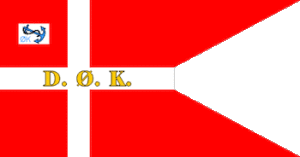
*The Danish West India Company was formed on this date in 1671. This was a Dano-Norwegian chartered slave-trading business that operated out of the colonies during the Middle Passage in the Danish West Indies.
Originally the Danish Africa Company, it was started in Glückstadt by Finnish Hendrik Carloff, two Dutchmen, and two German merchants. Their mandate included trade with the Danish Gold Coast in present-day Ghana. In 1671 the Africa Company was incorporated into the Danish West India Company. The West India Company was organized on November 20, 1670, and formally chartered by King Christian V on this date in 1671. The Danes settled in St. Thomas in 1668. The first successful colonization of Sankt Thomas employed the Royal Dano-Norwegian Navy ships. Still, the company quickly began employing its ships while occasionally relying on the royal navy for escorts and protection.
From August 30, 1680, it became known as West India–Guinea Company. At first, the company had difficulties being profitable, but eventually, it began to increase revenue by raising taxes and bringing all colonial exports into Copenhagen directly. St. John was purchased in 1718, and St. Croix from the French in 1733. In the 17th and 18th centuries, the company flourished from the Middle Passage trade routes. Slaves from the Gold Coast of Africa were traded for molasses and rum in the West Indies.
Closure
The company administered the colonies until 1754 when the Danish government's "Chamber of Revenues" took control. Frederik Bargum revived the company via the Royal resolution of March 18, 1765, to maintain trade with the Danish Gold Coast colonies. In November, they received the forts of Christiansborg and Fredensborg for 20 years. The financially troubled company was liquidated on November 22, 1776. In anticipation of this, the Dano-Norwegian government took control of the granted forts from August–September 1775. Bargum had fled the country to escape his creditors in 1774.